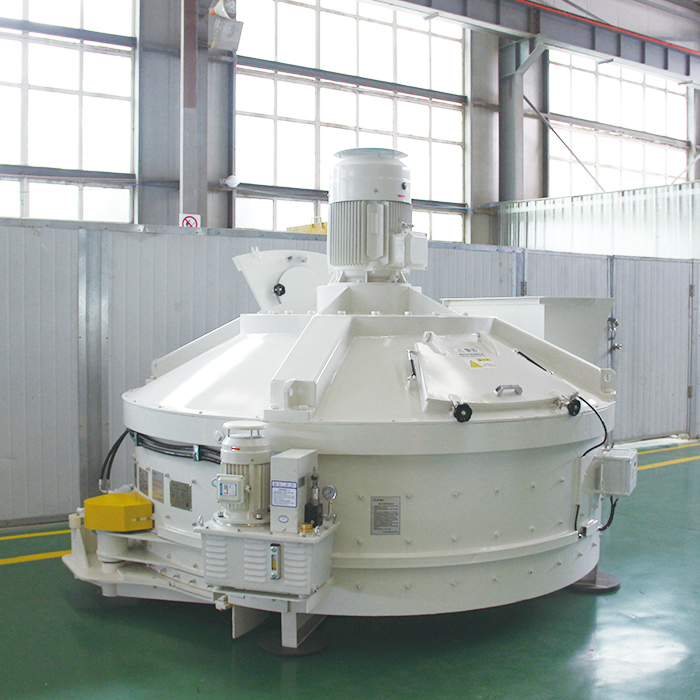Here’s a detailed comparison of the 1.5 m³Planetary Mixer and the CHS1500 Twin Shaft Mixer,highlighting their key differences,strengths,weaknesses,and typical applications:
1.1.5 m³Planetary Mixer
Principle:Features a large rotating pan with one or more rotating”stars”(mixing tools)that move on their own axes and orbit around the center of the pan(like planets around the sun).This creates complex,intensive mixing paths.
Capacity:1.5 cubic meters(1500 liters)per batch.This is a common size for precast and high-quality concrete production.
Key Characteristics:
Intensive Mixing Action:Provides exceptionally high shearing forces and homogenization due to the counter-rotation of the pan and stars.
Superior Mix Quality:Ideal for producing very consistent,high-performance concrete,especially with:
Stiff mixes(low water-cement ratio).
Fiber-reinforced concrete(FRC-excellent fiber distribution).
Self-consolidating concrete(SCC).
Colored concrete.
Mixes with special additives or admixtures.
Gentle Discharge:Usually discharges by tilting the entire pan or opening a large bottom gate,minimizing segregation.
Batch Cycle Time:Generally slightly longer than an equivalent twin shaft mixer due to the intensive mixing process and discharge mechanism.
Power Consumption:Typically higher than a twin shaft mixer of similar capacity due to the complex drive system moving both the pan and stars.
Cost:Generally has a higher initial cost than a twin shaft mixer of similar capacity.
Typical Applications:
Precast concrete plants(paving stones,blocks,pipes,structural elements).
Production of high-specification ready-mix concrete.
Production of specialty concretes(FRC,SCC,colored,architectural).
R&D labs and high-quality product manufacturers.

2.CHS1500 Twin Shaft Mixer
Principle:Features two horizontal,parallel shafts rotating towards each other.Each shaft is equipped with paddles/blades.Material is sheared and pushed along the length of the mixing trough.
Capacity:The”1500″designation typically refers to a nominal batch volume of 1500 liters(1.5 m³).CHS often stands for a specific manufacturer’s series/model designation(e.g.,commonly used by CO-NELE,etc.).
Key Characteristics:
High-Speed Mixing:Generates strong shearing forces primarily through the counter-rotating shafts and paddle interaction.Efficient homogenization.
Fast Mixing Times:Generally achieves homogeneity faster than a planetary mixer for standard mixes.
High Output:Faster cycle times(mixing+discharge)often translate to higher production rates for standard concretes.
Robust&Durable:Simple,heavy-duty construction.Excellent for harsh environments and abrasive materials.
Lower Power Consumption:Typically more energy-efficient per batch than an equivalent planetary mixer.
Discharge:Very rapid discharge,usually via large bottom gates opening along the length of the trough.
Maintenance:Generally simpler and potentially less costly than a planetary mixer due to fewer complex drivelines(though shaft seals are critical).
Footprint:Often more compact in length/width than a planetary mixer,though potentially taller.
Cost:Generally has a lower initial cost than a comparable planetary mixer.
Mix Flexibility:Excellent for a wide range of standard mixes.Can handle tougher mixes(e.g.,with recycled aggregates)well,though fiber distribution might not be quite as perfect as a planetary.
Typical Applications:
Ready-mix concrete plants(primary mixer type globally).
Precast concrete plants(especially for standard elements,bulk production).
Concrete pipe production.
Industrial flooring production.
Projects requiring high-volume output of consistent standard concrete.
Applications needing robust,low-maintenance mixers
Comparison Summary & Which to Choose?
Feature 1.5 m³ Planetary Mixer CHS1500 Twin Shaft Mixer (1.5 m³)
Mixing Action Complex (Pan + Stars) Simpler (Counter-Rotating Shafts)
Mix Quality Excellent (Homogeneity, FRC, SCC) Very Good (Efficient, Consistent)
Cycle Time Longer Shorter / Faster
Output Rate Lower Higher (for standard mixes)
Robustness Good Excellent
Maintenance More Complex/Potentially Costly Simpler/Potentially Less Costly
Initial Cost Higher Lower
Footprint Larger (Area) More Compact (Area) / Potentially Taller
Best For: Ultimate Quality & Specialty Mixes High Output & Standard Mixes
Post time: Jun-20-2025








